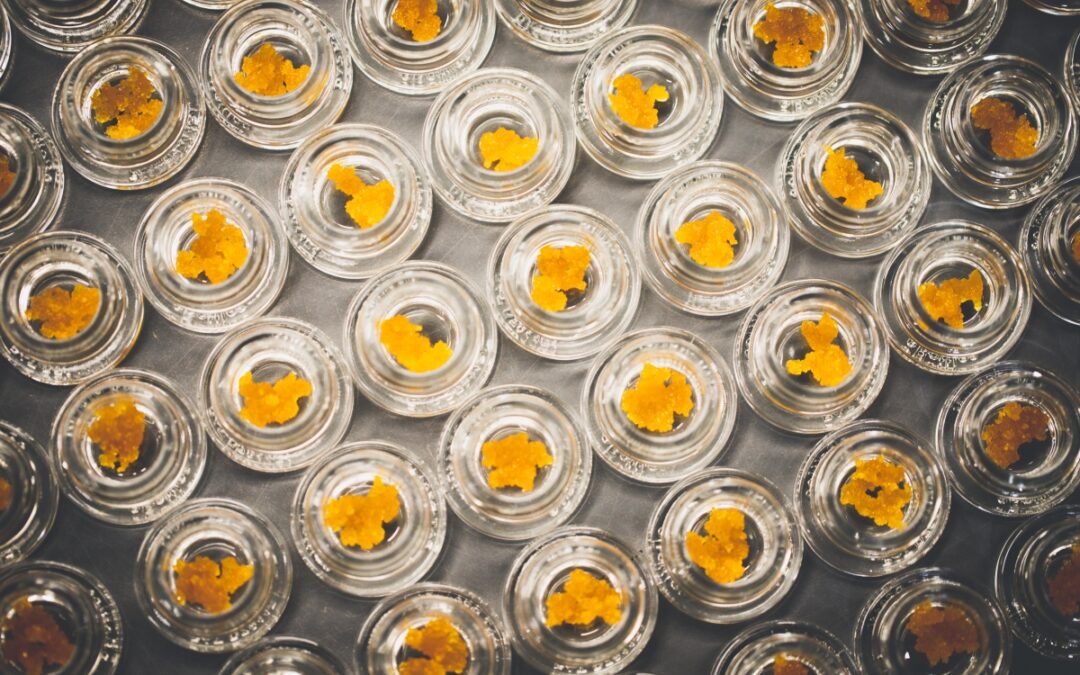Due to all the years it spent as an illegal substance, cannabis is still a relatively unexplored field for the scientific community. Although terpene science has advanced, and the endocannabinoid system is now more understood, we still only have a partial grasp of how and why this plant interacts with our bodies.
However, we still do have a lot to understand about cannabis concentrates and their use, due to the chemical profiles, and the overwhelming number of product options. If you are new to concentrates then knowing the details of the production process will help you find which kind of concentrate is the best for you and offers the desired benefits and effects.
What are Cannabis Concentrates?
Put simply, cannabis concentrates are highly potent concentrated masses of cannabis resins that contain high amounts of THC or CBD. They frequently have THC concentrations that are up to four times higher than those of top-shelf cannabis.
Any cannabis product’s potential effects, scent, and flavors are brought on by cannabinoids and terpenes which are present in the cannabis plant as tiny, iridescent trichomes. A concentrated accumulation of these trichomes is basically a cannabis concentrate. The entire plant is covered in these frosty appendages but mostly on the surface of the flower buds. They’re easy to see on high-quality cannabis flowers.
How Are Cannabis Concentrates Made?
The flower is placed through a procedure called extraction to form concentrates, which yields an aromatic, powerful, and occasionally even sticky substance. The cannabis enthusiast can enjoy the concentrated effects of the plant without the plant material by consuming a concentrate. Some concentrates may enable you to experience higher THC levels in their reduced form; these levels typically range from 50 to 90%.
Extraction Methods
Various cannabinoids, terpenes, flavonoids, and other medicinal compounds are extracted from cannabis plant material using various extraction techniques. There are numerous different types of concentrates available because each extraction method is different. The basic methods include solvent-based extraction and solventless extraction. Solvent-based methods may use supercritical CO2 oil extraction, ethanol extraction, or hydrocarbon extraction.
Difference Between Concentrates and Extracts
Although the terms concentrate and extract are sometimes used interchangeably, there is a slight distinction between the two. The term concentrates is basically a catch-all for all extracts. Therefore, even though all extracts are concentrates, not all concentrates can be considered extracts.
As mentioned before, the trichomes of the plant are gathered with mechanical methods to create a marijuana concentrate. Concentrates made without the use of solvents include rosin, dry sift, and kief. A marijuana extract, on the other hand, goes one step further and employs a solvent to remove the trichomes from the plant material.
Hash would be categorized as a concentrate since it involves mechanical ways to remove trichomes, which is the fundamental distinction between concentrates and cannabis extracts. BHO wax, on the other hand, is a concentrate, but specifically, it’s an extract. And, this is because manufacturers use butane to extract the desired cannabinoids and terpenes.
Forms of Cannabis Concentrates
Solvent-based concentrates are more typically extracted in large quantities and require big amounts of flower to be processed into a significant amount of these consistencies. Solvent-based concentrates include distillate oil, shatter, wax, live resin, crumble, etc.
Solventless concentrates are made using different levels of pressure, heat, or filtration instead of using solvent chemicals. The most common types of solventless cannabis concentrates are rosin, hash, and budder.
How to Consume Cannabis Concentrates
Smoking cannabis concentrates called “dabbing” or “taking a dab.” Heating a concentrate or extract until it vaporizes and emits an extremely potent vapor that the user can inhale is the technique of dabbing.
The most popular way to consume cannabis concentrates is via dabbing, which explains why concentrates are sometimes referred to as dabs. However, these compounds can also be consumed as tinctures, vape pens, topicals, edibles, and in other ways.
Concentrates can be smoked in a variety of ways, such as with a rig, a vaporizer, or a nectar collector. Each dabbing technique has its own set of equipment and different approaches.
Benefits of Using Marijuana Concentrates
Compared to other methods of intake, cannabis concentrates offer a number of advantages. Cannabis concentrates can be quite effective for people looking for temporary euphoric effects and due to their condensed form you just need a small amount to consume. Moreover, cannabis concentrates might be a better option for people worried about the long-term effects of smoking on their health.
Lastly, cannabis concentrates, which are rich in terpenes and cannabinoids, could be used as preventative therapy. Because of their well-known anti-inflammatory effects, cannabinoids may provide protection from diseases associated with inflammation.

